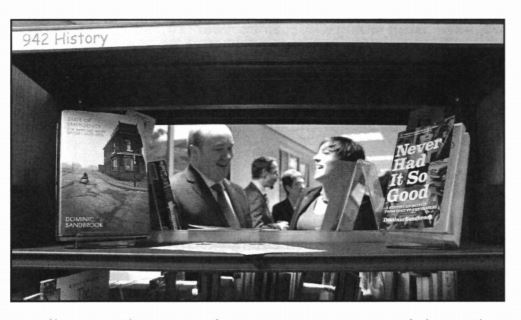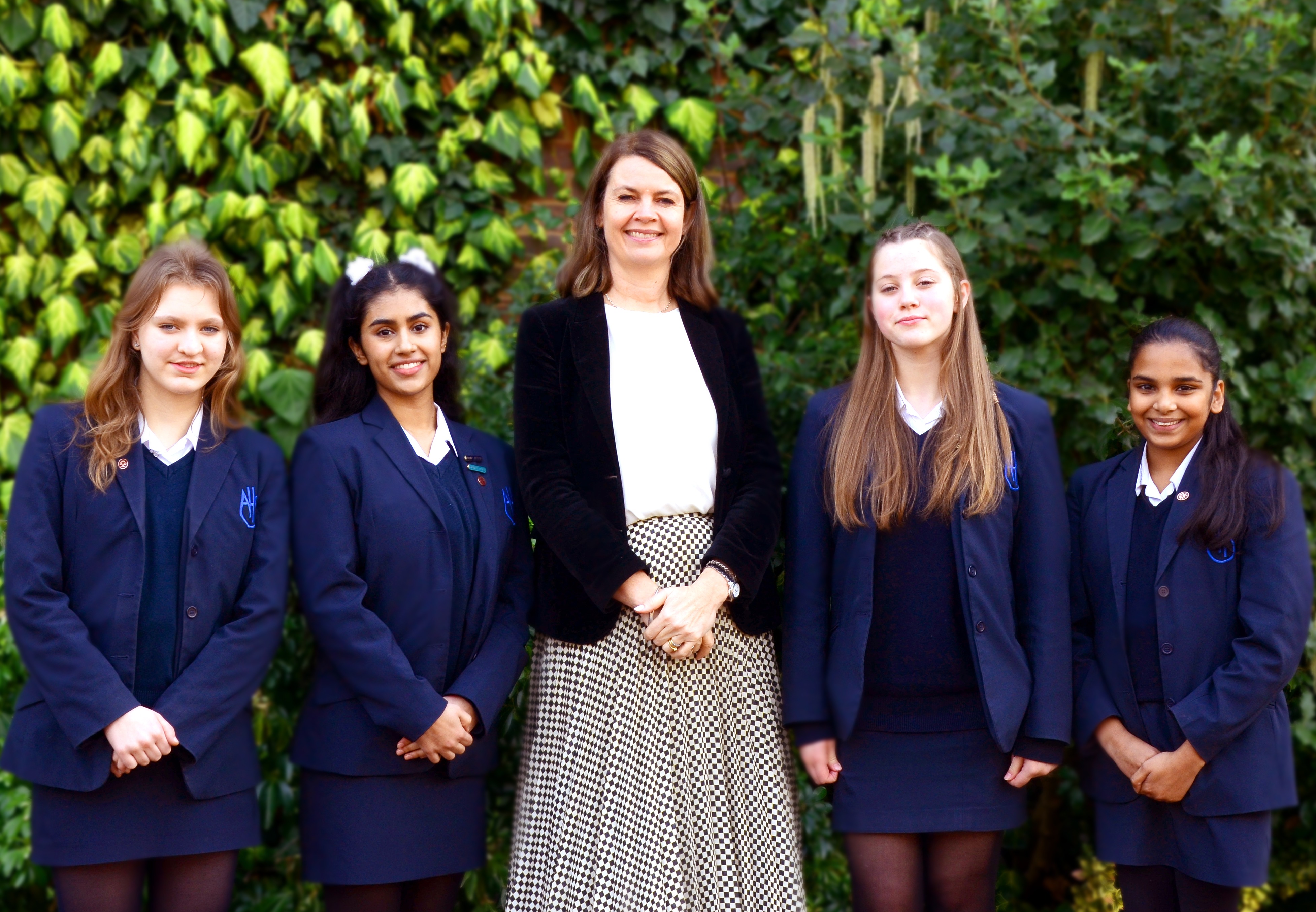| 1598
Aylesbury High School has its origins with Aylesbury Grammar School. The state of education in Aylesbury was low during Queen Elizabeth I's reign. In 1598 Aylesbury was a small town with a lace-making industry, surrounded by farmland. Sir Henry Lee was a champion of Queen Elizabeth I and he gave an original endowment of reported value of £8 per annum from 1598 in order for the young boys of Aylesbury to receive an education. The first home of the Aylesbury Grammar School grounds was in St Mary's Church, Aylesbury. |
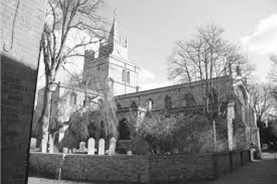 St Mary's Church, Aylesbury |
| 1611
In 1611, the school moved to the buildings which presently house the County Museum in St Mary's Square, and remained there until 1907. During this time the boys learnt Latin, writing, arithmetic and accounts, and whilst studying, they all had to adhere to strict rules. Boys were to be in school at 6 every morning until 11 am, and then to return from 1 until 6 pm in the afternoon. Any boy found to be missing ten days of school in half a year without 'proper reasons' was to be dismissed. Many applied to attend the school although a lot were not admitted for numerous reasons including 'could not read', 'gone to work, 'left the town' and 'sent for but did not come'. |
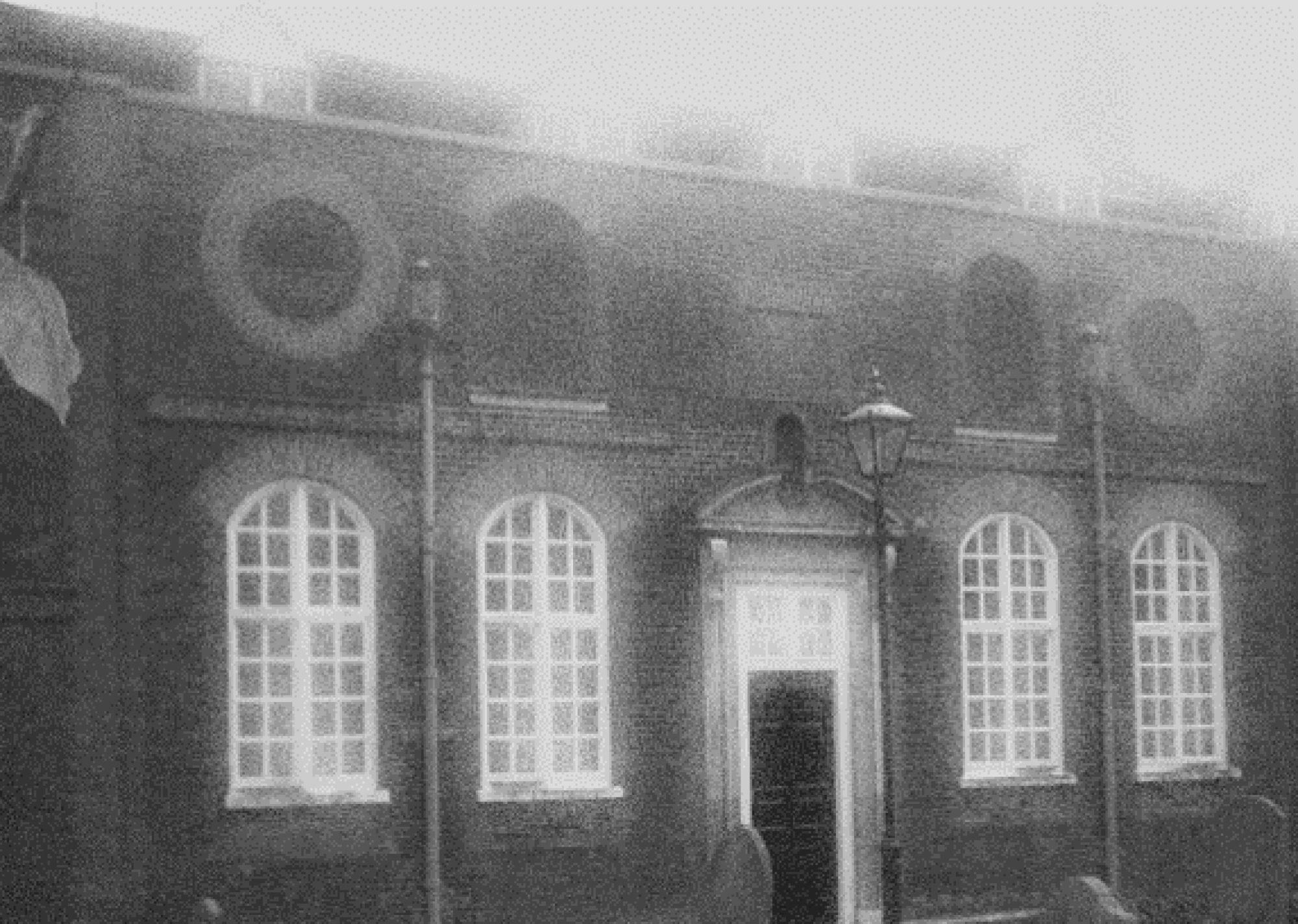 County Museum in St Mary's Square, Aylesbury |
| 1801
In 1801, Aylesbury's population was just over three thousand but the arrival of the canal in 1814, followed 25 years later by the first rail link, led to a rapid rise in population to around five thousand by the mid-1880s. At this time the inadequacies of the school site were becoming apparent, with issues being raised including a lack of games facilities and deteriorating buildings. The poor attendance rate of students also did not go unnoticed. |
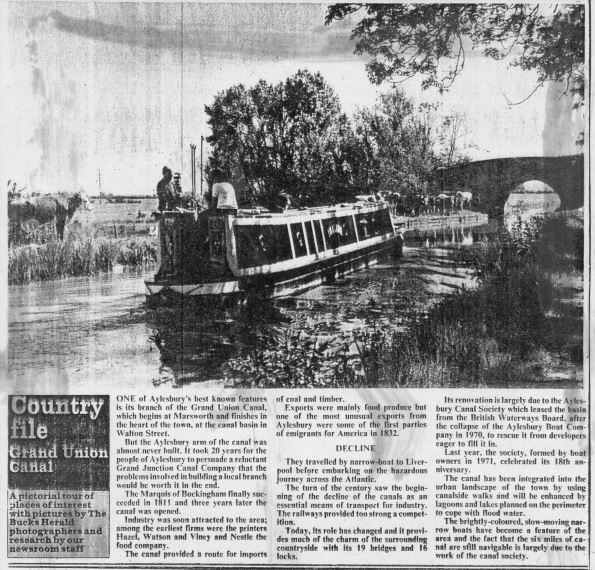 |
| 1849
In 1849, a meeting in the County Hall was held to solve the problem of inadequate space. A committee supported by local charities was established to search for a new site for the school, and was decided to accommodate girls as well. At the time a series of Education Acts like the 1833 Factory Act established local authorities, school inspection, and compulsory education for all children between the ages of five and twelve, inevitably with different aspirations for boys' and girls' education. Girls' education tended to conform to class and gender expectations with working class girls, if educated, taught the basics of reading, writing, arithmetic and domestic skills such as needlework in small elementary schools run by working class women in their own home; or Sunday schools run by the church or charities |
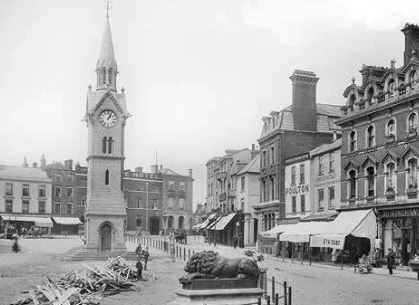 Aylesbury Market with County Hall |
| 1904
In 1904, Lord Rothschild of Tring agreed to sell about 8 acres of land adjoining Turnfurlong Lane at £170 an acre to the Foundation Trustees. The purchase price was £1406 (the equivalent of around £170,000 today) |
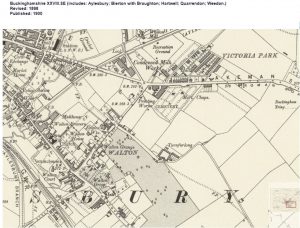 |
| 1907
By Easter 1907 the school transferred from the old buildings in St Mary's Square to its present site. The old buildings were then bought by the Architectural and Archaeological Society for the purpose of housing a museum, and St Mary's Church acquired the remaining land. The new school on its brand new grounds was opened and local townspeople attended the opening ceremony of the school, which would accommodate 75 boys and 75 girls. The cost of the new school was £6000, the equivalent of £700,000 today. |
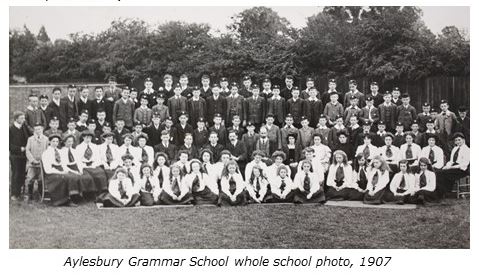 |
| 1914
By the outbreak of World War 1 in 1914 there were 158 pupils and accommodation was again becoming strained. During the war the school was requisitioned by the War Office for use as a military hospital and the school was forced out and had to use several buildings as classrooms in and around Kingsbury and St Mary's Squares. War conscription caused chaos amongst the local community, and the school had to cope with staff being called up to serve as well as students dropping out to compensate for the loss of farm labour. |
.jpg?v=-696023779&v=-482928061&2) |
 | 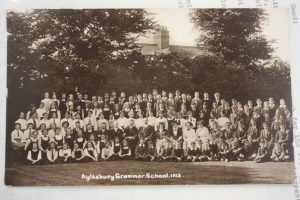 |
| 1919
Britain entered the post-WW1 era, and for Aylesbury Grammar School, in late September 1919, 220 pupils were readmitted to the school. Twenty one former pupils had died in the war, and their names were inscribed on the memorial stone which was unveiled two years later and still stands today. |
 |
| 1938
From the early 1920s the demands for improvements to the school buildings gathered momentum. Various renovations were undertaken but these were inadequate to cope with the rise in pupil numbers. From 1929 – 1939 the number rose from 265 to 346. On November 16 1938 Aylesbury Grammar School received a note of the case for co-education in secondary schools which included data on the number of single sex schools in the country. As recorded for the year 1936-37 there were 472 boys schools, 445 girls schools and 319 mixed schools in England. |
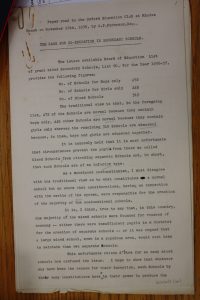 |
| 1939
The Second World War saw further problems for Aylesbury Grammar School, with over 200 boys and girls from London and other threatened areas attending the school between 1939 and 1945. The whole of Ealing County Boys' School was evacuated and relocated at AGS. They were timetabled on a rotation, with Aylesbury pupils attending classes in the morning, and Ealing pupils in the afternoon. |
 |
| 1942
On 25 September 1942 at 21.30, Aylesbury was one of the first towns to be hit in the war with a parachute mine being dropped only a few hundred metres from AGS, on a coal (coke) store behind Walton Pond. One person was killed and the bomb devastated much of the area. It destroyed the medieval Walton Grange, although the garden wall still remains, and now forms part of AHS. The records also show a US practice bomb dropped in March 1944 near to what is now the boundary between The Grange School and AHS. Twenty one girls who had attended AGS served in HM forces during the War (list is in notes). Two girls were killed in the war – Ruby Dixon and Beryl Baynes Cope. |
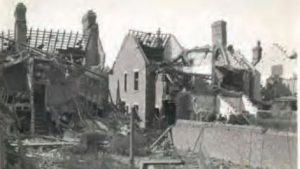 Walton after bombing |
| 1952
During the post-war years Aylesbury grew rapidly, particularly after the new town scheme to overspill residents from London and there were plans which suggested closing the school. In 1952 there was the first mention of the school being split into two single-sex institutions. |
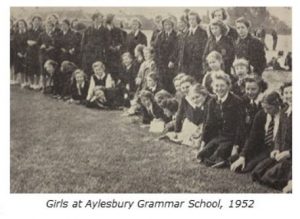 |
| 1953
The post-war life at AGS saw the remaining few years of co-education of boys and girls before the separation. The House Music Festival was introduced, and they had three choirs: boys, girls and mixed. Careers talks were provided regularly and separately, with boys being advised on the Civil Service, accounting and engineering, and girls advised with social services, catering and clerkship. In a 1953 edition of the Aylesburian, it was mentioned that 126 boys visited an Outward Bound sea school in Aberdovey. In February 1953, Aylesbury Grammar School had their first official inspection in 20 years. It acknowledged the physical handicaps of the school premises including the lack of facilities for private study. Even possible alternative use of the headmaster's house and gardens was considered. |
.jpg?v=-1185414015&v=-558913443&2) AGS girls, 1953
AGS girls on their way to school |
| 1954
In November 1954, whilst AGS were holding their annual speech day in the nearby Town Hall discussing the need for new buildings, a fire started on the school grounds. By the time the fire brigade arrived, the hall and physics laboratory were ablaze. Local press reported that the fire had devastated students, teachers and parents and temporary accommodation was provided in six classrooms at Queens Park Secondary Modern School and in other rooms at the nearby Technical School. |
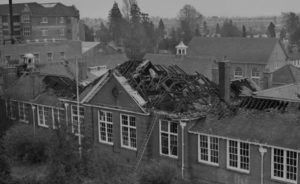 AGS after the fire AGS after the fire |
| 1955
On 20 October 1955, at a Buckinghamshire Education Committee it was decided that two single sex grammar schools should be provided in Aylesbury and that the Aylesbury Grammar School Foundation should be associated with the boys' grammar school. This decision was reported to the County Council in November and a vote was taken approving the decision of the Education Committee. Buckinghamshire Education Committee – decision made regarding the splitting of AGS into two single sex schools |
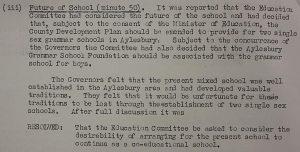 Buckinghamshire Education Committee – decision re the splitting of AGS into two single sex schools |
| 1956
The decision to create a separate girls school was controversial to say the least. Most parents were unhappy; one parent made a vain attempt to encourage all parents to approach the authority as a body. The debate even reached the House of Commons where the Minister for Education intimated that it was appropriate to have a school for girls. C.G.S. Furley wrote in an editorial for The Aylesburian that, 'a town the name of which had only been synonymous with ducks, suddenly hit the national press and radio.' |
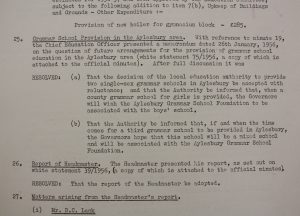 Memorandum regarding the opening of two single sex schools Memorandum regarding the opening of two single sex schools |
| 1957 A decision was reached that the new girls' school would be built on the remains of The Grange; the badly damaged area from the bomb explosion. The original grounds of Aylesbury High School were built at a cost of £127,367 (the equivalent of £2,923,125.38 today) and as the new headmistress Miss Camp was appointed prior to the schools completion, she was able to influence the creation. |
.jpg?v=-1480610583&v=483215351&2) |
| 1959 Aylesbury High School opened its doors for the first time in September 1959. |
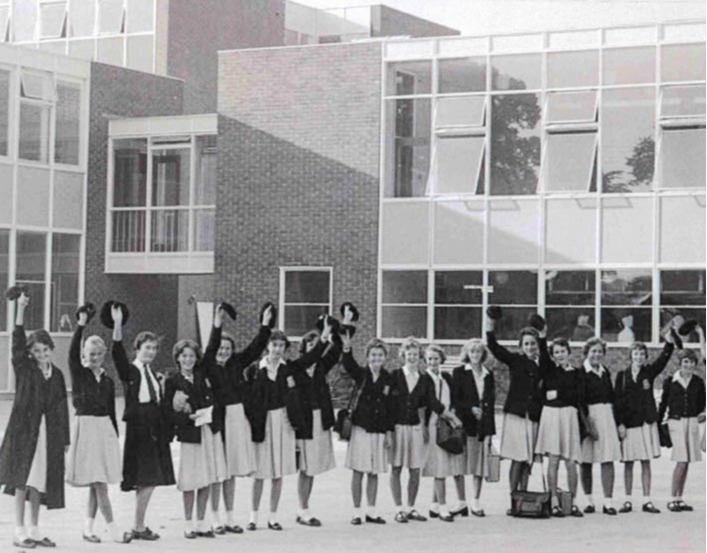 |
| Joan Camp, Headmistress
September 1959 – July 1975 The first headmistress was Miss Joan Camp. Her three main aims for AHS were: that the school should be known for its academic excellence; secondly, that it should be acclaimed for its service to the community, and finally that it should create and maintain international relations. These three aims are still being pursued and achieved to this day. Miss Camp was headmistress for 16 years, and when she met up with the 59ers, (the girls who started as first formers the year the school opened) in April 2010, she still remembered many of their names. Miss Camp's role for developing the school's international outlook Chairman Zena Williams on Miss Camp's retirement |
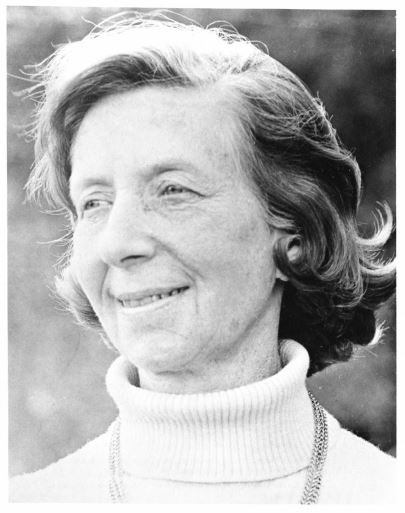 |
| 1960
The school was officially opened on 20 May 1960 by HRH Princess Alexandra. The day is most famously remembered for the rain. The Princess was then presented with a bouquet by 11-year-old Janet Tipping, one of the youngest girls in the school. In her speech HRH said: I agree with Lord Curzon that you are very lucky to have these new buildings and hope you will be happy in surroundings to which so much thought and care has been given. School buildings are not usually as fine and spacious as these. You are very fortunate in possessing them. There's nothing more rewarding for any woman than to create a happy home. Princess Alexandra told the girls. I hope you will take full advantage of your school as it will reflect in the careers you choose and the homes you make. |
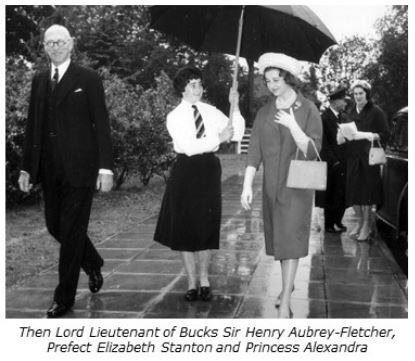 |
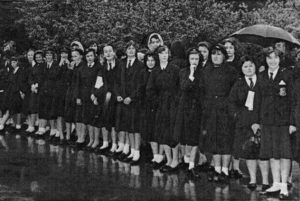 Students awaiting the arrival of Princess Alexandra |
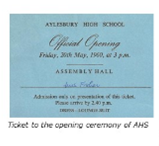 |
| 1961
The link with our German exchange school in Stuttgart/Feuerbach was established in the schools first year in 1960 and the first exchange took place in Easter 1961 with ten girls taking part, including Angela Grouille, who would later become Modern Languages Coordinator at Aylesbury High School. The German party returned in July and this set a pattern which still continues, with exchanges taking place every other year, members varying from between 20 and 40. |
 Assembly in the main Hall of the newly opened AHS |
| 1962
In 1961 an Advanced Biology lab, greenhouse, needlework and cookery rooms (the old domestic science room then became the general science lab) and a cloakroom were added on the ground floor and three classrooms and a potting room on the first floor. Classes started using these in September 1962. During the movement, one student had to do her A Level Needlework theory lessons in the store cupboard on the top floor of the Tower Block. |
 |
| 1965
On 1st May the High School Governors were asked if they would not make an application for a grant towards a swimming pool if a large grant was made towards the Grammar School pool, on the grounds that it would be used by the girls. |
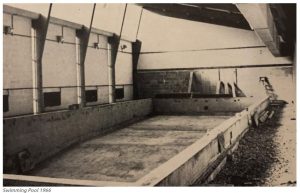 |
| 1967
The Grammar School pool was completed in November 1967. Ann Cottrell, the then Head of the PE Department wrote: the opening of the Grammar school swimming pool – sitting on the platform in my 'interview' suit trying to behave like a lady. We were amazed at the swimming talent which emerged once we were able to practice. The only downside was that the traditional Swimming Gala moved from the Vale Pool where all could watch, to the AGS pool where space for spectators was limited, however the water was warm. |
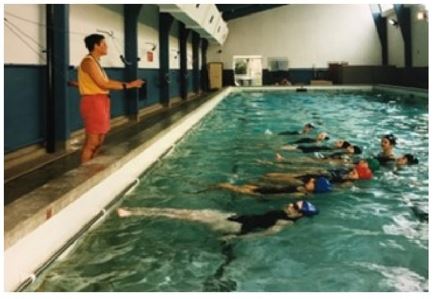 |
| 1968
The years 1964-1969 were labelled 'The Years of Expansion' in the AHS 25th anniversary book, particularly for the school's international contacts. Miss Camp returned from Uganda in 1965 and 'Operation Uganda' was launched with staff and girls eagerly 'adopting' three girls and paying for their fees for a secondary education. This project culminated in the visit of the Ugandan High Commissioner to the school on June 18 1968. Later that year his wife and two children visited the High School. |
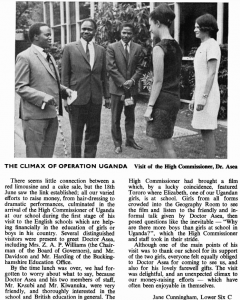 Visit of the High Commissioner of Uganda, 1968 |
 Lower Sixth, 1969 |
|
| 1974
The Aylesbury High School Association (AHSA) was formed. Entry to the school changed from 13+ to 12+. |
 |
| Margaret Lambert, Headmistress September 1975 – July 1992 Miss Margaret Lambert took over as headmistress in 1975. Under her leadership the school gained a number of new buildings: the Harding Hall, which was soon being used for year assemblies, parents' evenings, examinations and concerts; the Common Room, which was enjoyed by Sixth Formers and the new library which benefitted all students. However, her proudest moment was her success in the pursuit of a technology block to rival the one in the boys' school. This resulted in the girls now having specially built rooms for drama, textiles and sculpture, with workshops for metal and woodwork. Miss Lambert instigated two very important changes, which are still in place at AHS –the introduction of certificate evenings and a Cabinet to replace the existing prefect system. |
 |
| 1976
In 1976, the school trialled a Cabinet and the sixth formers wanted to trial shared responsibilities so there was no Head Girl. This only lasted a year, and every year since there has a been a Cabinet elected by the students and staff with a Head Girl. The New Block containing the Library and old Sixth Form Common Room was open in 1976. |
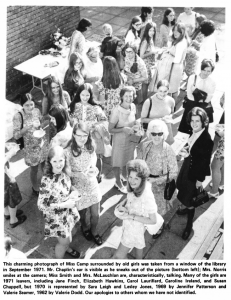 |
| 1978
The Harding Hall was open and soon in use for Year Assemblies, Parents' Evenings, examinations, concerts, etc. and it first became the venue for the school play in 1978, when Mrs Collard's memorable production of Noah was staged there. The architecture of the Harding Hall did not have universal admiration, but everyone certainly appreciated its versatility. |
 |
| 1980
The first computer at AHS was donated by a parent in 1980 and was kept in the science block. It wasn't used for teaching – as you can imagine a class of girls and only one computer doesn't really work – but it was used for admin and timetabling. By November, a printer was purchased and a little computing was introduced to the curriculum. |
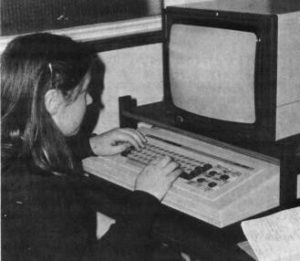 |
| 1982
The first computer room was S10 and was opened in 1982. This computer room was state of the art for its time. It was rare to have a computer room in a school, but Miss Lambert had a vision for the school and saw computing as a priority. |
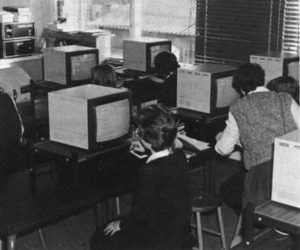 |
| 1985
In 1985, science teacher Dr Angela Wall introduced Duke of Edinburgh to Aylesbury High School. Only 20 girls decided to take part in the first year. |
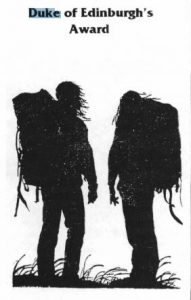 |
| 1987 Chair of Governors since the school opened in 1959, Mrs Zena Williams, stepped down, but remained a Governor at the school. |
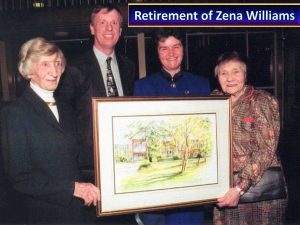 |
| 1998 Mr Richard Torpey joined Aylesbury High School in 1989 and taught here or 30 years until his retirement in 2019. He was hired to set up the Business department and started up Business A Level soon after joining. Students in the A Level initially had to do a 2 week work placement. Mr Torpey commented that a lot of them learnt on these placements how girls and women were perceived in industry and that it can be hard for girls to be taken seriously. Eventually, Mr Torpey noticed a move away from the idea of boys and girls subjects over time; girls could start to see it as a career when they chose it for A level, after in the early years, when talking about managers there was an assumption that they needed to be male. |
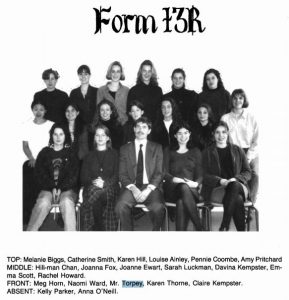 |
Jane Wainwright, Headteacher September 1992 – July 2003 Ms Jane Wainwright succeeded to the position of headteacher in 1992. Like her predecessors, she had high aspirations for the students and a determination to make positive improvements to the school. In 2001, a bid for Aylesbury High School to receive Language College status was launched. Jane Wainwright, who oversaw the project, said that the language school enabled AHS to form a global outlook, an ethos important for a school which had always had an international outlook. Ms Wainwright thoughts on her retirement |
 |
| 1993
On 24th November 1993 the Margaret Lambert Technology Centre was officially opened by Baroness Platt, a former chairman of the Equal Opportunities Commission and a prominent engineer who had done much to encourage women to enter engineering. 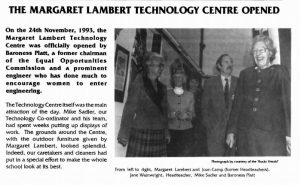 |
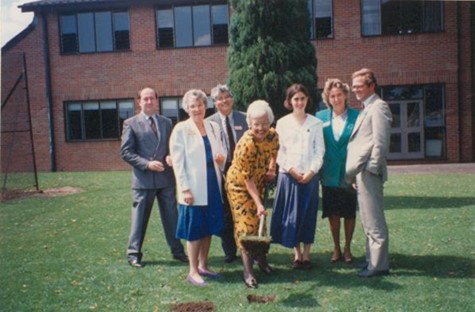 Margaret Lambert during the Tech Block building process |
| 1994
In June 1994, the school appointed a full time chartered librarian, Mrs. Sue Dyer and a Library Assistant, Mrs. Annette Hammett. The library was completely refurbished during the summer holidays and a generous parental contribution of £ 10,000 from the AHSA enabled the purchase of high quality furniture. The refurbishment allowed girls access to a photocopier, computerised stock control, seven computers connected to the school network, four of which were multimedia computers, and one connected to 'INTERNET'. Ms Wainwright commented that in 1994 the computers were in constant use and the demand outstripped their availability. |
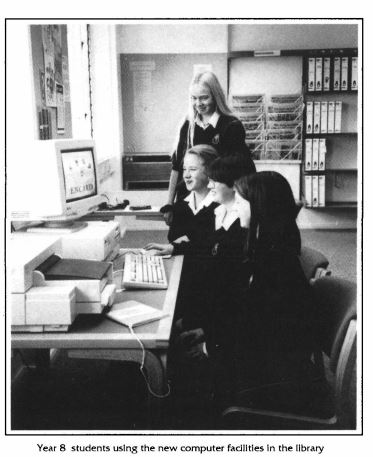 |
| 1995
Prime Minister John Major wanted entertainment for his guests and invited six Sixth Form students to become the first amateur musicians ever invited to play at Chequers, on June 16. In September, Alan Rosen joined Aylesbury High School. |
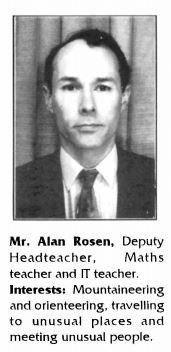 |
| 1996
Students were given the opportunity to take part in World and First Challenge expeditions, with the first trip to Zimbabwe in 1996. |
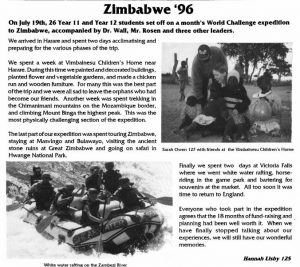 |
| 1997
AHS was classified as excellent by OFSTED. The new Drama studio was opened. |
 |
| 1998
The new Drama building with its Drama Studio and IT room was opened by Councillor Mrs. Freda Roberts, MBE on April 24th 1998. The girls who won the Global Rock Challenge a month before performed their act and were watched by invited guests, including some of the trustees of the William Harding Charity, whose grant made possible the equipping of the studio with state of the art, high-tech lighting and sound systems. The annual year 8 trip to Aberdyfi began in 1998. In the first school that he taught at, then Deputy Headteacher Mr Alan Rosen had taken year 8 students to a youth hostel in the Lake District for a week every summer. Seeing the effect meant that at his next school he set up an activity week to get everyone out of classes for a week. When he came to AHS, Year 8 were the youngest year group, so he wanted to get them out of class. The trip has been running every year since, with most girls to come through AHS's doors experiencing the outward bound centre. Head of Geography then Jane Brownlee who had been at the school since 1975 sadly passed away. In her memory, a travel scholarship has been offered to sixth formers every year since. |
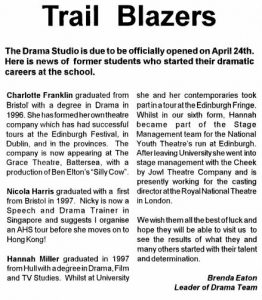 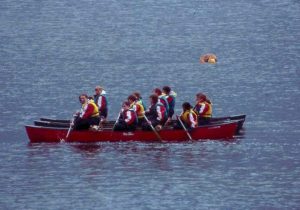 First year 8 trip to Aberdyfi |
| 1999
In the school's 40th anniversary year, AHS launched a development campaign to improve facilities. These included: a high-tech multimedia modern language suite, new changing rooms and showers (which hadn't been updated since 1959), a new music room and a dance studio. As part of the 40th anniversary and the celebration of the millennium, the school also buried a time capsule in the school grounds planned to be produced after another 40 years on the school's 80th anniversary. AHS held its first House Art Competition to celebrate the 40th anniversary of the school. The challenge was for each House to form a team of girls from all years, led by a member of Year 12, to design a mural inspired by the last 40 years. In the summer term of 1999 Mr David Chaplin retired. He arrived at AHS on 11th September 1962, only three years after the school opened. |
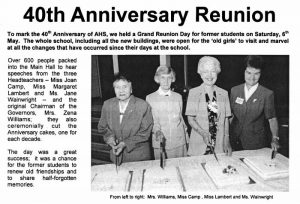 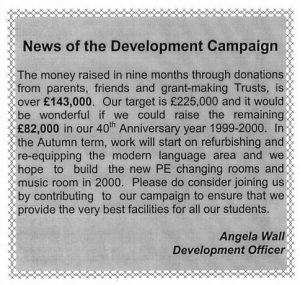 |
| 2000
In July 2000, Mr Torpey flew to Kenya for two weeks, his first time on a plane by himself, and first time outside Europe. Mr Torpey spent most of his time in school, working with students and teachers to find activities which will link the two schools through the curriculum. Girls learnt about Kenya during English, Geography, Religious Studies, Science, Music, Business Studies and other lessons during that year. At the same time, students in Kericho learnt about life at AHS. In October, the Headteacher of Chagaik Secondary School, Mr. Philip Kimetto, visited Aylesbury. An unexpected outcome of the link was that a number of students at both schools decided that they would like to exchange letters, poems, stories and photographs and this was ongoing until the link unfortunately fell apart in 2015. |
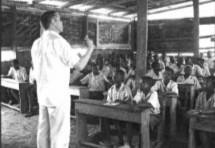 Mr Torpey teaching in Kenia  |
| 2002
Ms Jane Wainwright moved to become Headteacher of Wycombe High and Ms Bozena Michalska became Acting Headteacher in the Autumn term, and after 13 years at AHS left the UK to become Deputy Head at Wanganui Collegiate School in New Zealand. The Language College was officially opened in April. The new front entrance opened Monday 11 March 2002. Claire Foy left the school and later…. 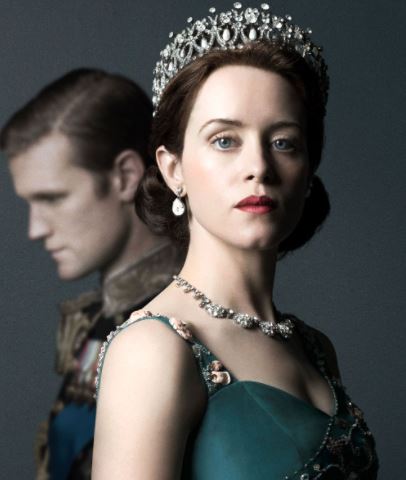 |
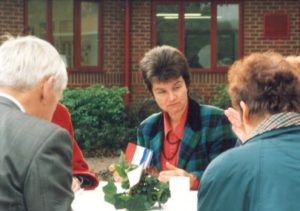 Jane Wainwright in her last year at AHS  Then receptionist Suzanne Livingstone in the new reception |
| Ruth Alinek
September 2003 – July 2005 Ms Ruth Alinek came from Southend High School for Girls and stayed as headteacher for two years, leaving AHS in 2005. |
.jpg?v=122041370&v=1222727490&2) |
| 2003
Aylesbury High School welcomed Sunil Pillay, headteacher of Wyllie Memorial High School, India, in June, after Mr Rosen had visited Wylie as part of a British Council initiative. |
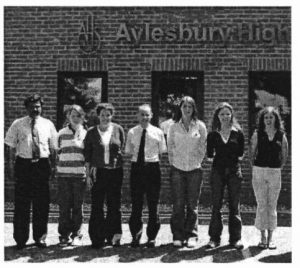 Sunil Pillay, headteacher of Wyllie Memorial High School, with Mr Rosen and the cabinet |
| Alan Rosen, Headteacher September 2005 – July 2019 Mr Alan Rosen came for an interview at AHS with the intention of getting some interview practice, and to familiarise himself with Buckinghamshire's rather esoteric education system. Within a few hours of the interview he felt that this was a school he could work in, as it possessed the energy and sense of purpose that fitted in with Mr Rosen's ways of working. He stayed at Aylesbury High School for 24 years, spending the first ten years as deputy head and the rest as head. Following Mr Rosen's appointment in 2006, the number of students increased appreciably. Under his leadership, the school received significant government funding and successful donation campaigns resulted in improved facilities. These included the Sports Hall, Front Office extension, Sixth Form Centre and History rooms, the new Library as well as the refurbishment of the Science labs and the Tower block. As a result, the school is now 3 times the size it was when it opened 50 years ago. In 1998, Mr Rosen introduced the annual Year 8 trip to the Outward Bound Centre at Aberdyfi. It has become a much-loved tradition, experienced by more than 3000 students. Within a few weeks of arriving at AHS, Mr Rosen was asked to take a team to Zimbabwe on a World Challenge expedition. In fact, he spent many summer holidays accompanying students on long distance trips, and continued to nurture the global outlook of AHS. Aylesbury High School headmaster Alan Rosen retires after 24 years |
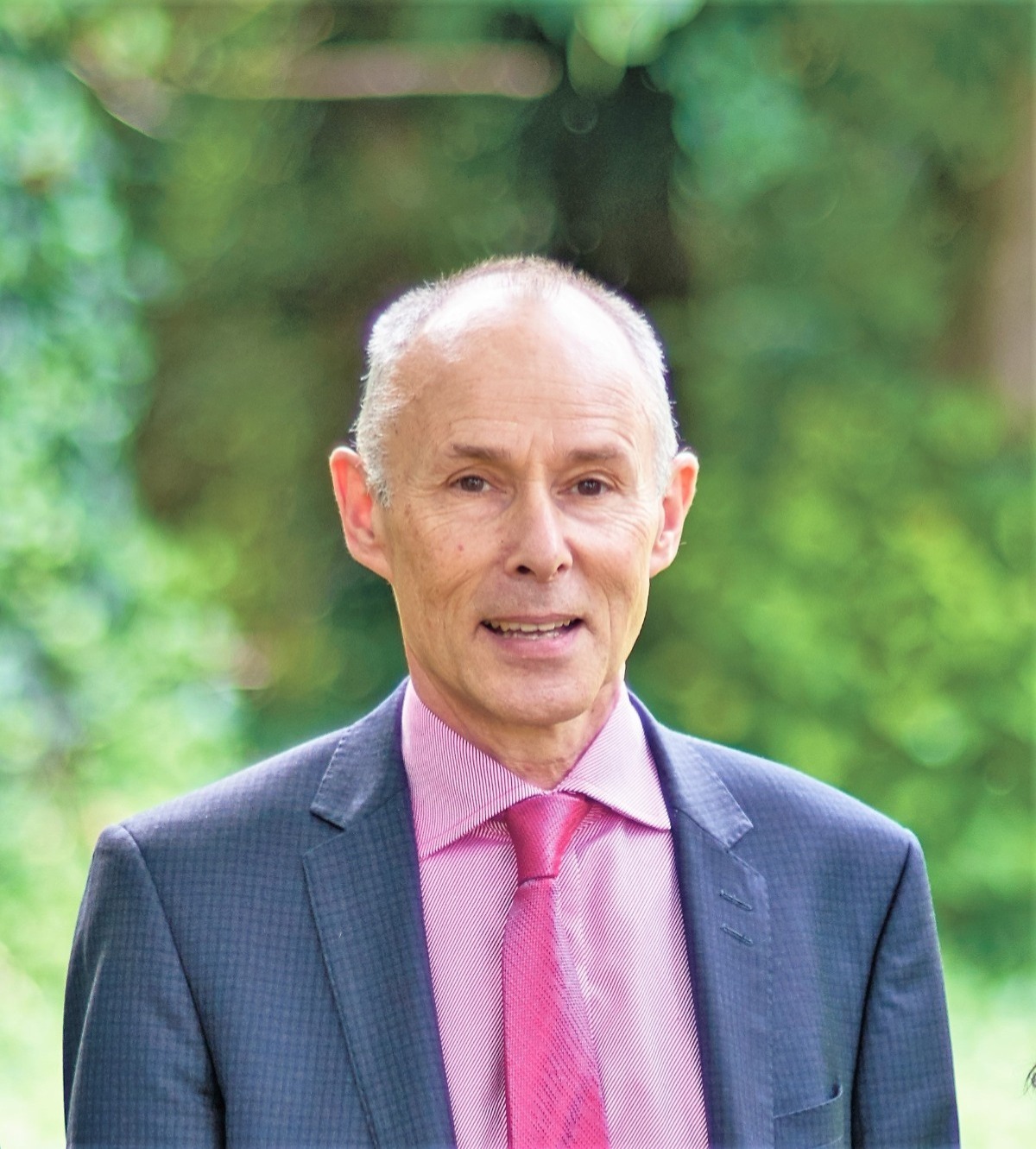 |
| 2005
The whole of the academic year 2004-5 was dominated by the building of the Sports Hall and the fund raising associated with it. The start of the 2005-6 academic year was dominated by preparations for its opening. We were delighted to invite the Paralympian Ade Adepitan to declare the Sports Hall open, who did it in style, while also giving us a display of his basketball talents and an insight into his life. |
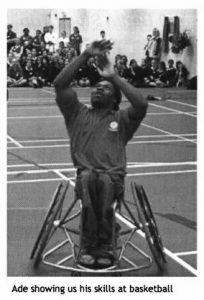  |
 |
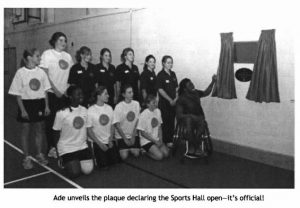 |
| 2006
In November, AHS broke a Guinness World Record of number of Christmas Crackers pulled simultaneously. Ben Way, editor of the Guinness Book of Records, walked round the circle counting every person. Mr Rosen counted down and there was a BANG!! It was official – AHS had SMASHED the World Record, with 1217 crackers pulled simultaneously. The record was beaten by a group in Japan in 2009. |
 ,The newly opened Sports Hall |
 |
| 2007
For the third time, being one of only 21 schools to do so, Aylesbury High School was awarded the International School Award – a very prestigious award, given to schools who have a true international ethos. At a ceremony in London Mr Rosen received the award on behalf of the school from BBC newsreader George Alagiah. |
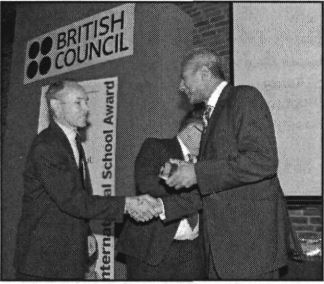 Mr Rosen receiving the ISA |
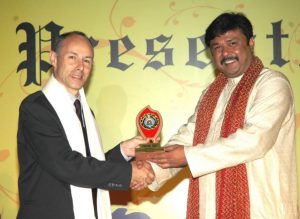 Alan Rosen and Sunil Pillay in India, 2007 |
| 2010
On May 8th, Aylesbury High School celebrated its 50th Anniversary.  |
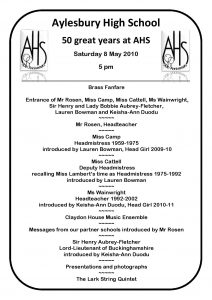 |
| 2019 AHS 60th birthday celebrations culminated on Saturday 6 July, when the refreshments, entertainment, activities and exhibitions offered something for everyone with participants performing live music on our outdoor stage, baking in TC3, showcasing drama, dance and music in the Summer Showcase and in the charity fashion show. Later in the summer, the Tower Block Campaign finished with the building work for one of the last remaining buildings of the original 1959 school, renovating the maths and geography classes initially built for housing 20 girls, and now having 30+ student classes. Alan Rosen retired as Headteacher of Aylesbury High School and Giles Scoble started in September. | 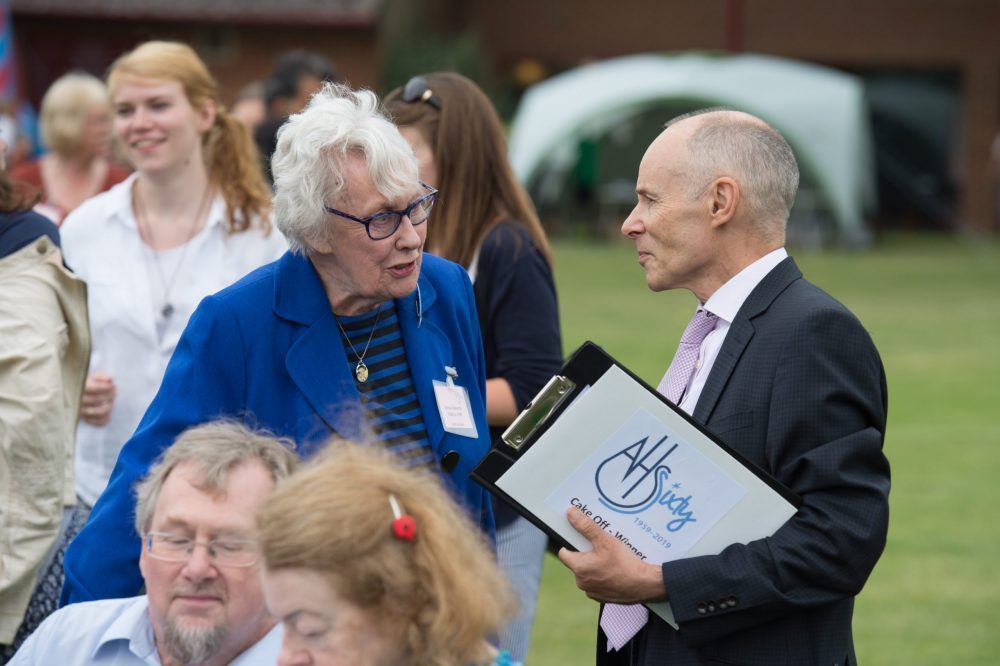  |
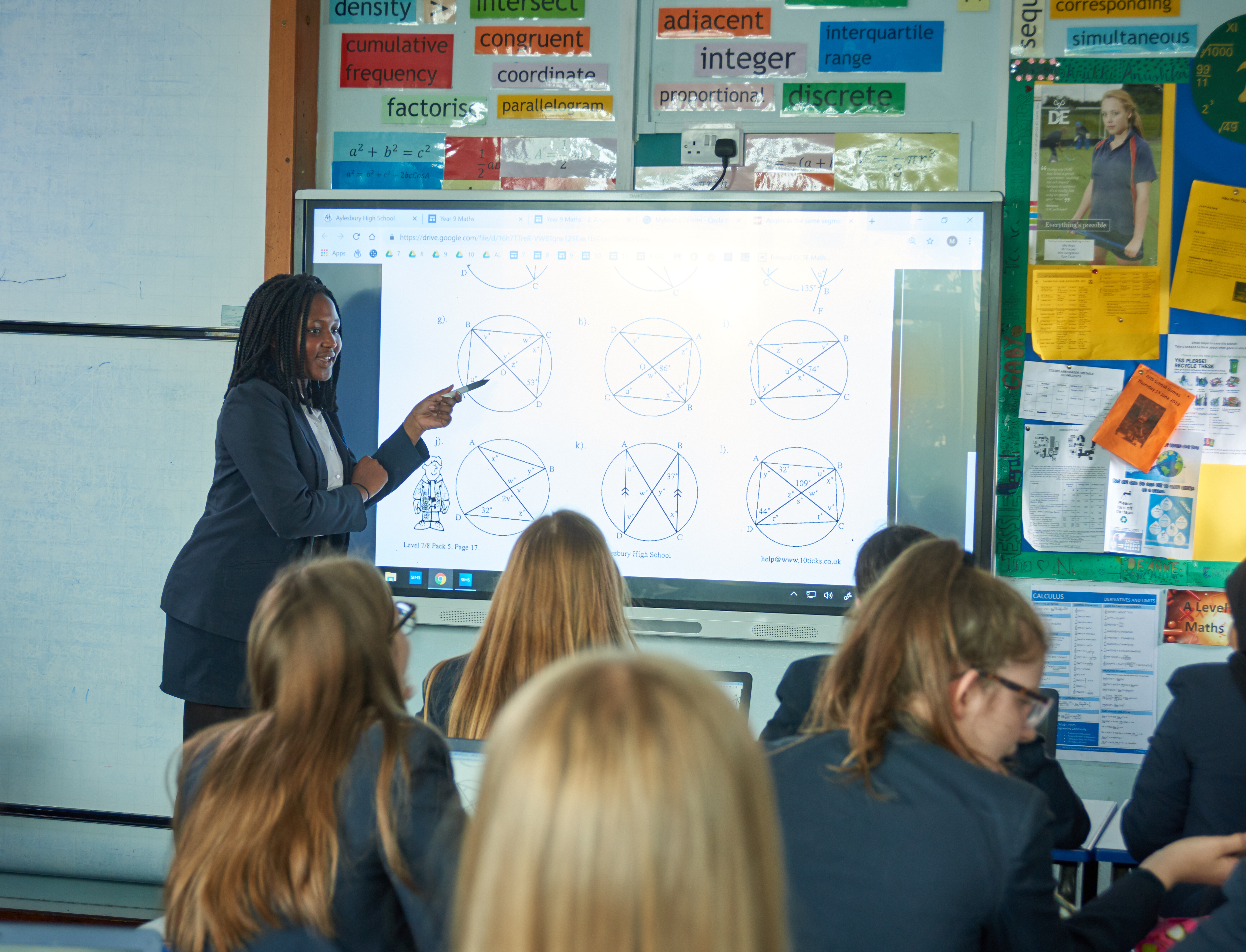 | 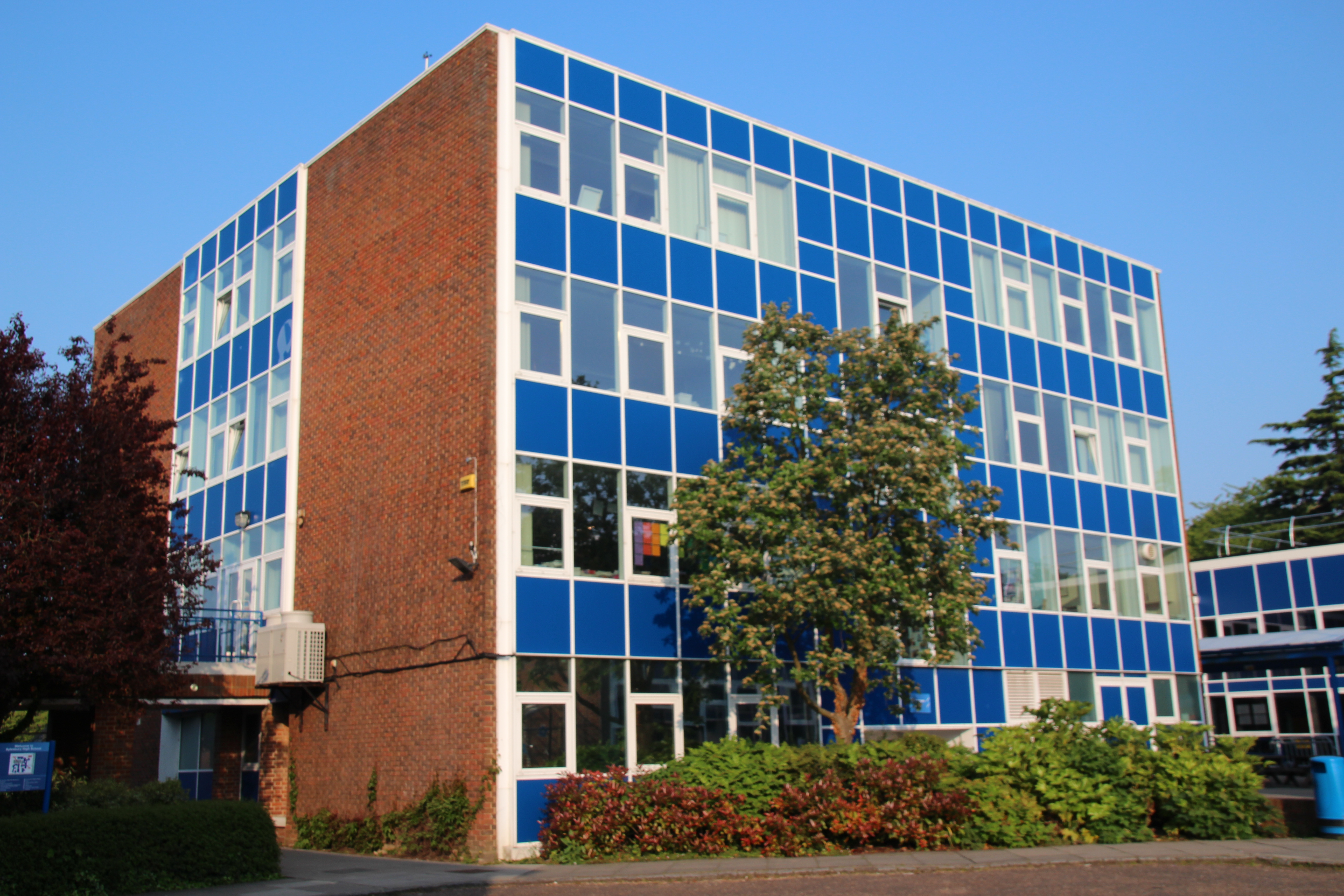 |
| Giles Scoble, Headteacher
September 2019 - November 2022 Mr Giles Scoble was appointed headteacher in September 2019 and he continued to build on the success of the school, leading the school through the COVID pandemic, meeting the many challenges this presented, including the logistics of setting up mass-testing and vaccination facilities and the move to remote working for all. He reluctantly, after a period of illness, made the decision to retire from active headship and to leave AHS in November 2022. |
 |

.png?v=-1185414015&v=-558913443&2)

